Por Jono Duffy Arctic Meta
Islandia es un país que parece estar en la lista de deseos de todos.Es el hogar de algunos de las másincreíbles atractivos naturales del mundo, y la experiencia de visitarla es completamente diferente dependiendo de la temporada del año.
Muchas personas que vienen a Islandia deciden tomar el control del viaje y ver el país a su propio ritmo con tours propios. Los tours pueden ser organizados por un tercero, como una empresa de viajes, o pueden realizarse de forma completamente independiente. La idea principal detrás de una conducción autónoma es que usted está literal y metafóricamente detrás del volante, por lo que podrá hacerlo todo a su propio ritmo.
Conducir tú mismo puede ser una excelente manera de ahorrar. Islandia no tiene precisamente la reputación de ser barata, por lo que alquilar un automóvil puede reducir en gran medida el coste de los desplazamientos. Conducir en Islandia es definitivamente una opción para los turistas que quieren ver la mayor parte posible del país, pero ¿puedes hacerlo en invierno? ¿Cómo son las condiciones de las carreteras? ¿Qué tipo de coche debes alquilar? ¿Cuáles son las reglas que los conductores extranjeros deben conocer? Sigue leyendo para enterarte de todo esto y más.
¿Debería conducir en Islandia durante el invierno?
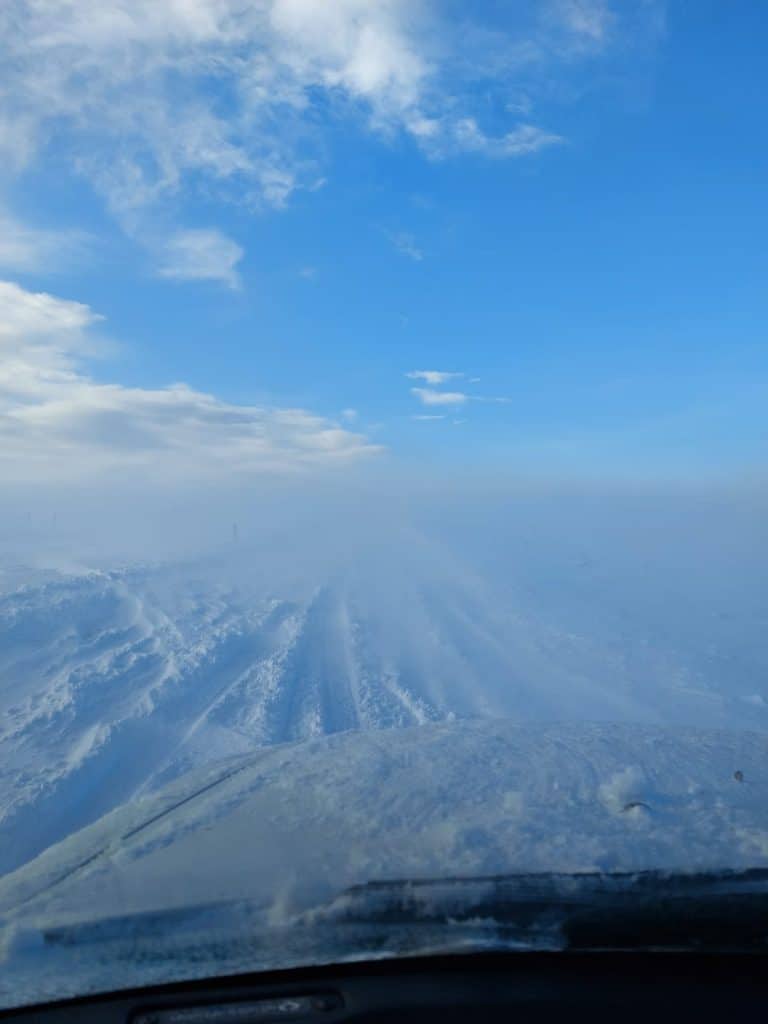
Definitivamente es posible conducir en Islandia durante el invierno, pero la decisión deberá basarse en lo cómodo que se sienta el conductor en las condiciones de la carretera en invierno. Hay muchas cosas que pueden influir en esto, como a cuánto tiempo está alguien acostumbrado a conducir y cuánta experiencia tiene conduciendo en nieve y hielo.
Por ejemplo, un conductor con mucha experiencia podría conducir perfectamente en Islandia durante los meses de verano, pero si nunca ha experimentado conducir en carreteras heladas o en condiciones de nieve, esto puede resultar más problemático de lo que parece.
En última instancia, la decisión depende del conductor, pero con suerte, el resto de este blog te ayudará a tomar una decisión.
¿Cómo son las condiciones de las carreteras en Islandia en invierno?
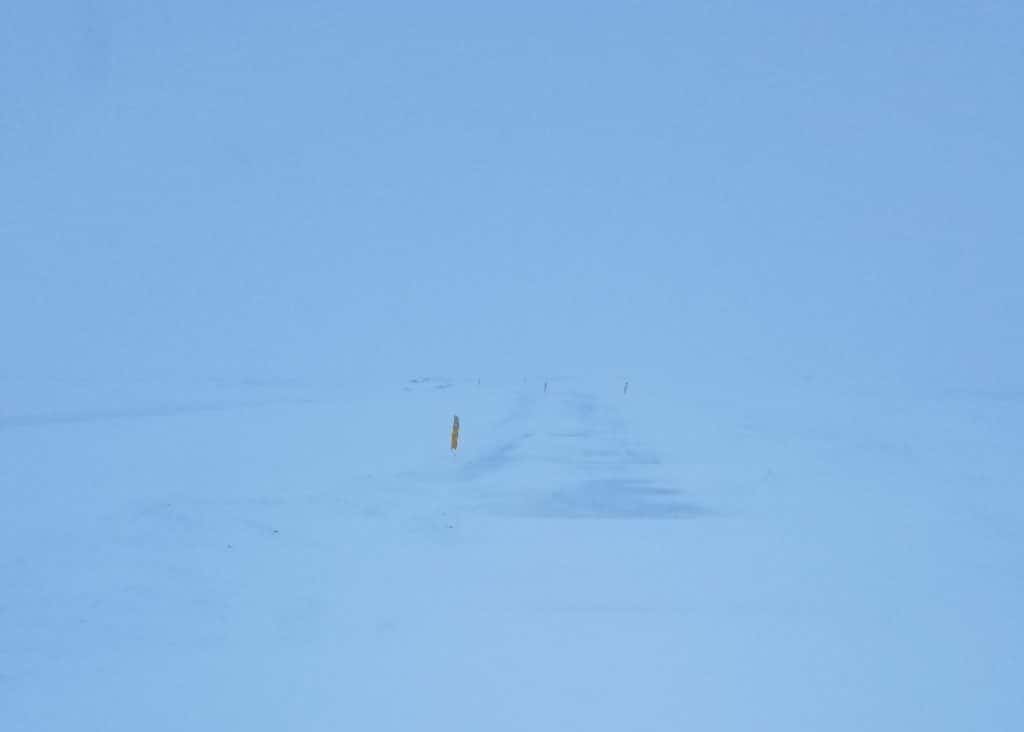
Durante el invierno en Islandia, es relativamente fácil acceder a muchos de los lugares de la costa. La mayoría de las carreteras principales están pavimentadas y el departamento de carreteras hace un buen trabajo para mantenerlas. Es importante saber que hay muchos caminos en el campo islandés que están hechos solo de grava o, en algunos casos, de tierra. Este tipo de caminos no se mantienen y generalmente están completamente cerrados durante el invierno.
Una de las cosas más importantes a tener en cuenta es que el tiempo en Islandia es altamente impredecible. Esto significa que las condiciones de las carreteras pueden cambiar de un día para otro. Es completamente posible conducir en Islandia en invierno por carreteras despejadas y sin hielo; pero es igualmente posible encontrarnos con carreteras que tengas altas cantidades de nieve gruesa y también hielo negro, que puede ser la causa de muchos accidentes.,
Si viaja principalmente a áreas urbanas y pueblos más grandes, en la ciudad se hace un buen trabajo para despejar las calles después de una gran tormenta de nieve, pero puede esto lleva más tiempo en áreas más rurales. Lo que significa que es muy común que algunas carreteras estén cerradas durante el invierno.
El viento también puede ser un problema. En algunas tormentas, el viento en Islandia puede llegar hasta los 255km/h, lo cual no es nada ideal para conducir.
La idea principal para conducir en Islandia durante el invierno sería planificar el viaje con anticipación, verificar siempre el pronóstico del tiempo y las condiciones de la carretera y por supuesto, tomarse su tiempo.
¿Qué meses tienen las condiciones de las carreteras de invierno en Islandia?
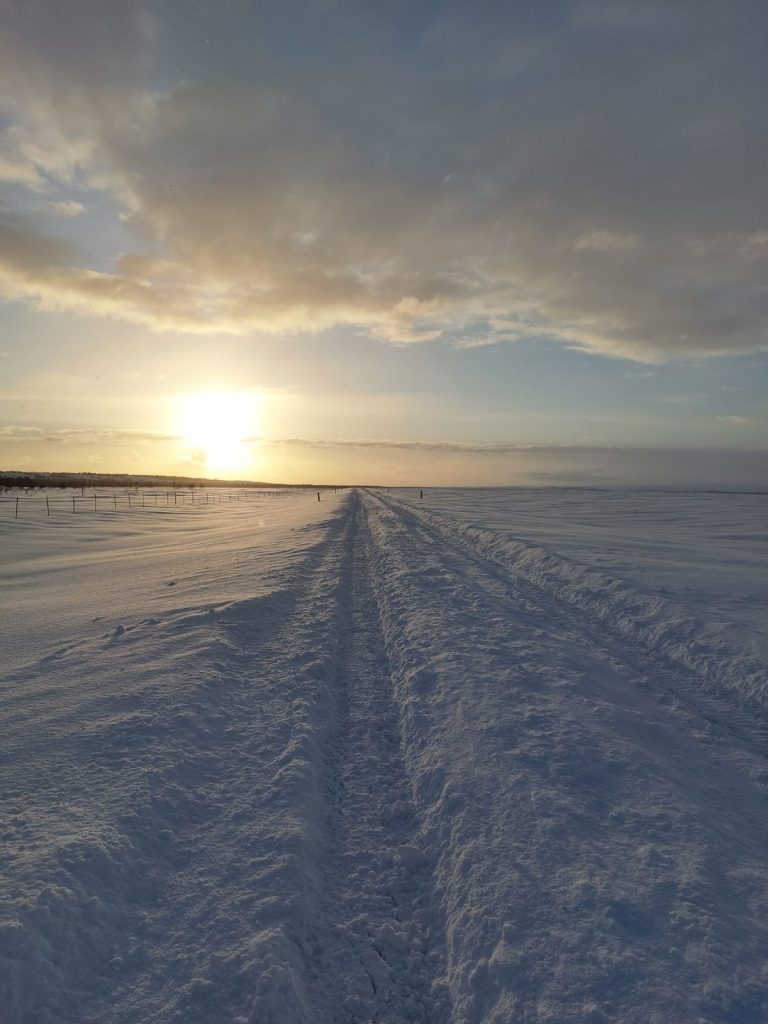
En el hemisferio norte, el invierno normalmente empieza a principios de diciembre y dura hasta marzo, pero en Islandia, la temporada de invierno puede llegar a comenzar a principios de octubre y continuar hasta finales de abril. En algunas partes del país, el invierno puede durar hasta mayo.
El país está habitado principalmente a lo largo de la costa, y la vasta extensión rural en el centro de la isla se conoce como las tierras altas, las tierras altas son un destino turístico popular para aquellos que quieren experimentar una vista más salvaje del país y es muy popular entre los entusiastas del senderismo. Las áreas de las Tierras Altas también pueden estar cubiertas de nieve y hielo hasta bastante tarde en el año, incluso hasta julio.
Cada año, la Administración de Carreteras y Costas de Islandia publica un mapa que muestra las condiciones de las carreteras y sus posibles cierres. Normalmente está disponible en las primeras semanas de verano y puede encontrarla aquí..
¿Qué tipo de coche debo alquilar para conducir en Islandia en invierno?
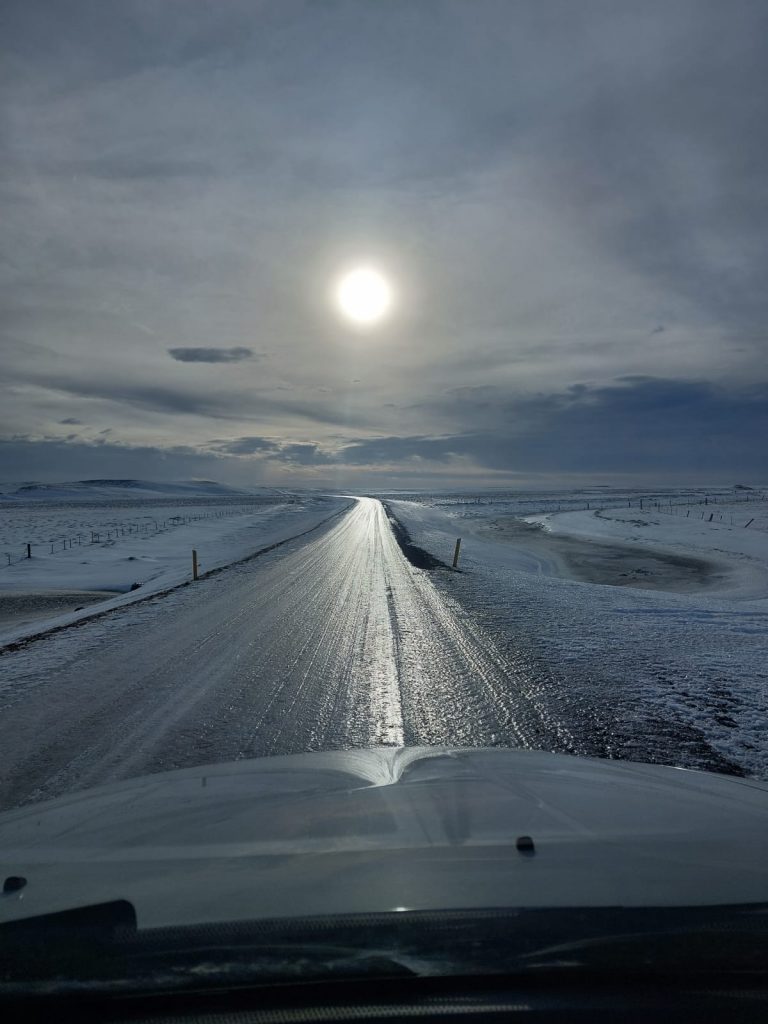
Esta es una de las preguntas más frecuentes que vienen a la mente cuando se planea visitar un país con tal variedad de condiciones viales. La respuesta a esta pregunta realmente depende de lo que planee hacer. Tenga en cuenta cosas como los lugares particulares que desea ver, cuánto distancia hay entre cada lugar y su experiencia general de conducción. Con suerte, después de considerar estos factores, la siguiente información le ayudará a decidir cuál es el vehículo ideal.
Alquilar un coche 4x4
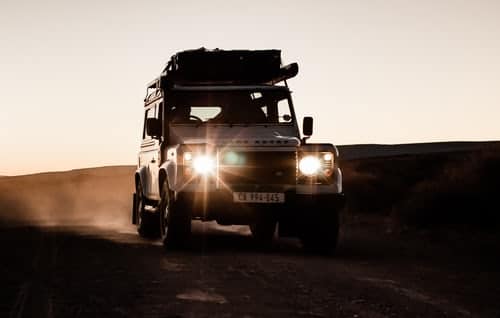
No es necesario alquilar un enorme y monstruoso camión cuando vienes a Islandia en invierno, pero es una muy buena idea alquilar al menos un coche con tracción 4x4. El control adicional que proviene de un automóvil con tracción en las 4 ruedas proporcionará un extra de seguridad en las condiciones de las carretera en invierno.
Es posible moverse por Islandia en invierno sin un coche 4x4 (siempre y cuando te quedes en la capital o en los pueblos/ciudades). Si un 4x4 está fuera de su presupuesto, al menos asegúrese de que el automóvil que alquile tenga decentes ruedas de invierno y de que no conduzca por pases de montaña o muy alejado de las carreteras principales.
Alquilar una autocaravana en invierno
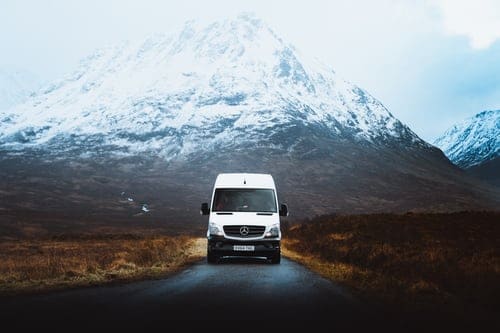
Para mucha gente, alquilar una autocaravana puede ser una gran manera de ahorrar dinero cuando se trata de alojamiento. No es del todo cutre, pero tampoco es el Ritz Carlton, por lo que puede ser un gran término medio que permite a los viajeros un poco más de libertad.
Hay algunas cosas a tener en cuenta antes de viajar en una autocaravana. Una de las cosas más importantes que debe recordar cuando viaja por Islandia es que es ilegal parar a pasar la noche donde usted quiera. El único lugar en el que puede acampar es en un campamento designado. La policía y los guardabosques patrullan regularmente gran parte del país, y si te descubren infringiendo esta regla, te enfrentarás a las consecuencias.
Puede ser increíblemente beneficioso reservar campings con antelación porque algunos de ellos cierran durante los meses de invierno. Un consejo final con respecto a las autocaravanas es asegurarse de que las mangueras de drenaje deban drenarse antes de viajar. Básicamente, cualquier fuente de agua tiene el potencial de congelarse mientras se conduce por Islandia.
¿Qué tipo de seguro de alquiler de coches debo obtener en Islandia?
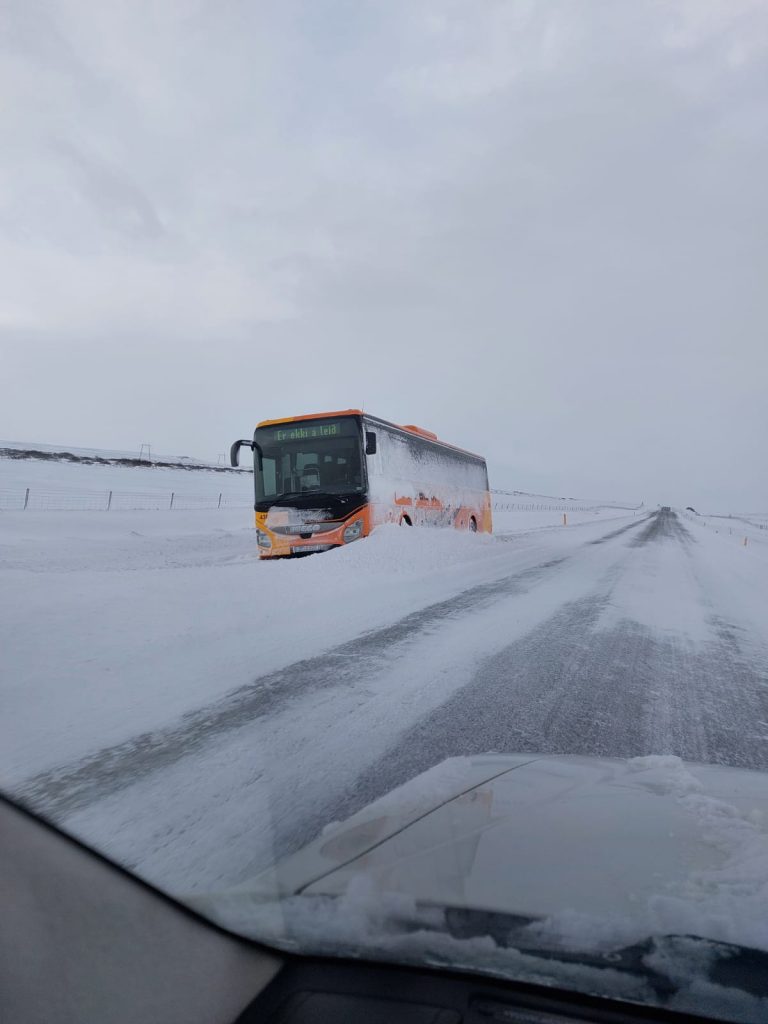
As far as the law goes in Iceland, every vehicle must have basic third-party liability insurance. In the majority of cases, this kind of insurance is usually covered by a standard Collision Damage Waiver (CDW) that comes with most rental agreements.
The most basic level of insurance usually covers accidents, but it might also cover things like vehicle theft (which is unusual in Iceland but not unheard of).
Keep in mind that generally, the deductible or premium on rental cars is considerably higher than with privately owned vehicles. In the case of an accident, even with insurance, the driver might face a premium of anywhere between 1200€ – 2700€. Always remember that basic insurance will rarely cover things like sand or gravel damage, windshield cracks or dents. Often some rental companies offer an insurance upgrade that will cover these things, and that can come along with a significant reduction in premium.
Always read the fine print, ask questions and use your own judgement when it comes to picking an insurance policy. Just be realistic about the fact that even on the paved highways, it’s possible to come across volcanic ash and rocks.
When it comes to licences, you are allowed to drive with a valid licence in Iceland from the age of 17 and up. Most rental companies won’t allow drivers younger than 20 but might even have an age limit of 25 and over. Your licence also needs to be in a Latin alphabet or be accompanied by an English translation.
Can I Drive the Ring Road in Winter?
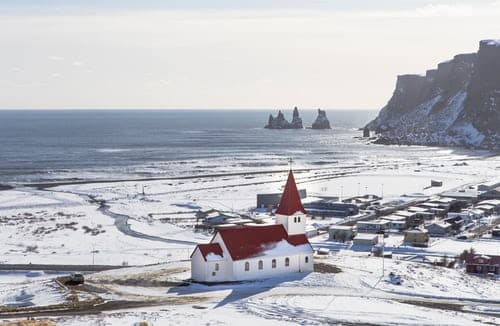
Iceland’s Ring Road is the most famous and arguably most important highway in the country. Also called Route 1, this highway makes a loop around the island and has a total length of 1,332 kilometres (around 830 miles).
Because it is paved and maintained, the Ring Road makes driving to most parts of the country incredibly easy, but it’s much better to do this in the summer months. Although it is maintained, there are sections of the Ring Road that become closed during winter.
As mentioned earlier, any winter road trip in Iceland is much safer in a car with 4WD capabilities, but even in this kind of vehicle, there are some mountain passes and narrow stretches of road that should be avoided in a snow storm.
The best advice for this is to take your time and perhaps don’t count on being able to use the Ring Road for your entire trip when travelling in winter. Generally, the southern part of the Ring Road stays pretty accessible. Many parts of the Westfjords and Eastfjords regularly get cut off due to inclement weather.
Where Can I Stop For Fuel?
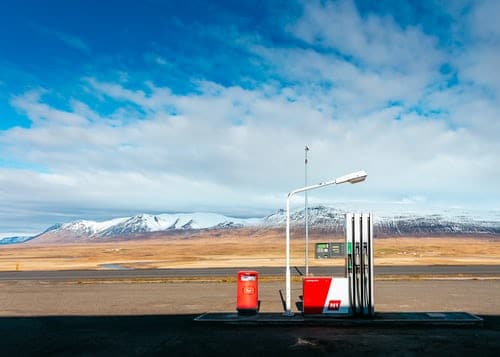
There are fuel stations all over Iceland, but it’s wise to make sure you top up your rental car whenever you are heading into a larger town. Most rental companies need you to return the vehicle with a full tank, so by doing this, you will basically save yourself time in the end. The most common fuel stations are N1, Olís and Orkan.
Not every gas station in Iceland is manned. There are many self-service fuel stations, and in order to use them, you will need a card that has a pin because they don’t normally accept contactless payments.
Typically, at a self-service pump, you ‘pre-pay’ by entering your card, and once it is approved, you will be able to pump fuel into your car. Iceland is used to travellers and tourists, so it’s rare that you will find a fuel station where instructions aren’t available in English.
Some towns like Vík on Iceland’s south coast have popular tourist hubs where you can fuel up, grab something to eat and even book tours. It’s not uncommon for larger gas stations to also have groceries as they are normally a useful resource for people who live in the area.
Can I Drive the Highland Roads in Winter?
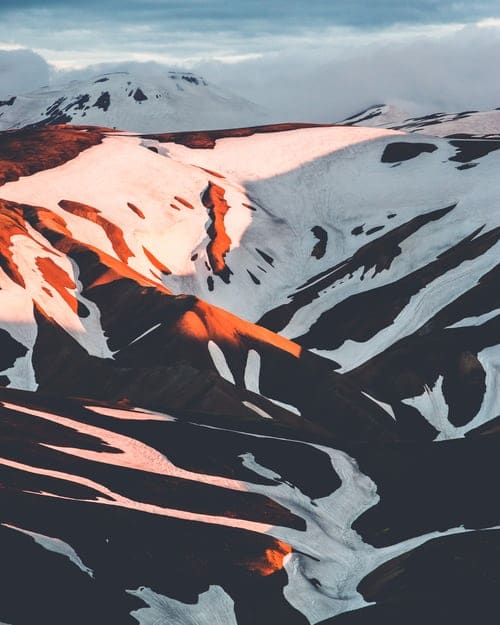
You should never under any circumstances attempt to drive in the Icelandic Highlands during winter. The roads that run through this remote part of Iceland are difficult to navigate, even without snow and ice.
There are two main kinds of roads in Iceland, regular roads and mountain roads or ‘F’ roads. ‘F’ Roads are only open to heavy-duty vehicles (think super jeeps). Most rental companies will actually void your insurance if you enter an ‘F’ road, so it’s best to stay on the regular highways for your safety and the safety of your bank account.
What Are the Best Spots to Visit in Iceland in Winter?
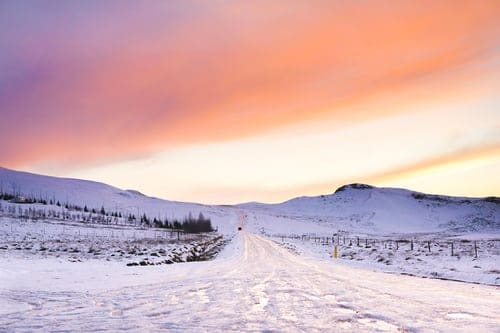
Even though there are a number of roads and paths that can be closed in Iceland during winter, there are still a number of incredible places worth visiting that are easy to drive to.
If you were to focus on a particular region of the country to visit during winter, it should probably be Reykjavík and the south coast. The reason this part of the country is ideal for a winter road trip is that thanks to the Gulf Stream, the temperatures are generally warmer than the rest of the country.
This part of Iceland is also home to some of the most sought after attractions the country has to offer. This area of Iceland is home to The Golden Circle, The Blue Lagoon, Reynisfjara Black Sand Beach, waterfalls like Seljalandsfoss and Skógafoss and the Jökulsárlón Glacier Lagoon.
On a road trip, it’s also possible to visit some parts of Western Iceland in winter. Places like the Snæfellsnes Peninsula and Borgarnes are normally accessible throughout the season.
If you have your heart set on visiting the North, East or Westfjords of Iceland in winter, it’s much easier and safer to take a flight from Reykjavík.
What Alternatives Are There to Driving in Winter?
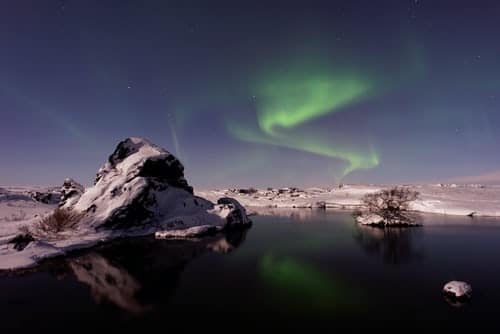
A self-drive trip is a great way to see Iceland, but if you’re not a confident driver, can’t drive or don’t have a lot of time to spare, there are a number of alternatives available.
Day Trips From Reykjavík
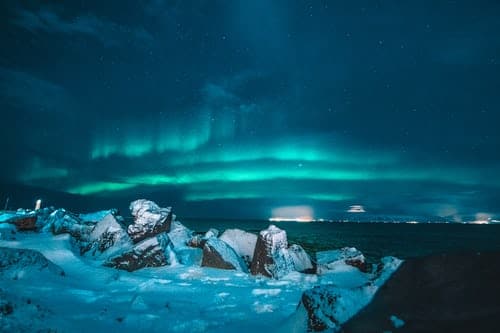
One very popular option for many visitors is to base yourself in the nation’s capital city, Reykjavík, and take day trips from there. There aren’t many places in Iceland that cannot be reached from Reykjavík. The city is not far from Keflavík International Airport, and Iceland’s largest domestic airport is located in the heart of the city. Lots of tour operators offer day trips to most of the popular locations and will pick guests up directly from their hotel.
One major benefit of basing yourself in Reykjavík is that you have the lively city at your disposal if bad weather happens to cancel your plans.
Private Tour or Guided Tour Options
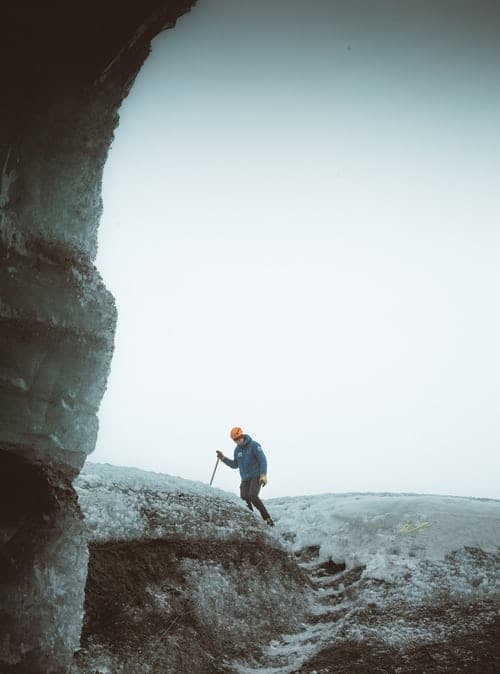
Taking a guided tour can be a fantastic alternative to driving yourself. The main benefit of taking a guided tour is that the travel arrangements are usually taken care of, which gives you more time and energy to enjoy the magic and wonder that the land of fire and ice has to offer.
Depending on where you are staying in Iceland and the specific tour you are going on, most companies offer hotel pick up and drop off, so you don’t need to worry about any of the planning. The Icelandic government is also quite strict on who is allowed to call themselves a ‘Tour Guide’ so you can be sure that the person guiding you is going to be a knowledgeable person with your comfort and safety as their top priority.
There are plenty of guided day tours available all around Iceland, but there are also multi-day ones to have a look at if you would like a bit of extra adventure.
Public Transport Options

Iceland does a lot of things really well; unfortunately, public transport isn’t one of them. There is a public transport system in the country, it just doesn’t really have a reach that goes further than city centres.
The only form of public transport in Iceland is the bus service called Strætó. It’s a handy form of transport for getting from one part of town to another, but it’s not really great for sightseeing.
There are long-distance buses that take tourists around the country, but they only operate during the summer months.
What to Stay Aware of
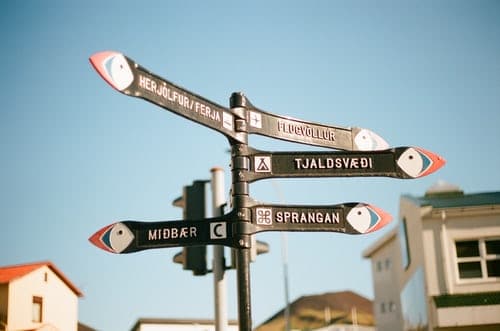
At a glance, there are a few things to take into account whenever you are preparing for a self-drive road trip in Iceland.
How to Monitor Road and Weather Conditions
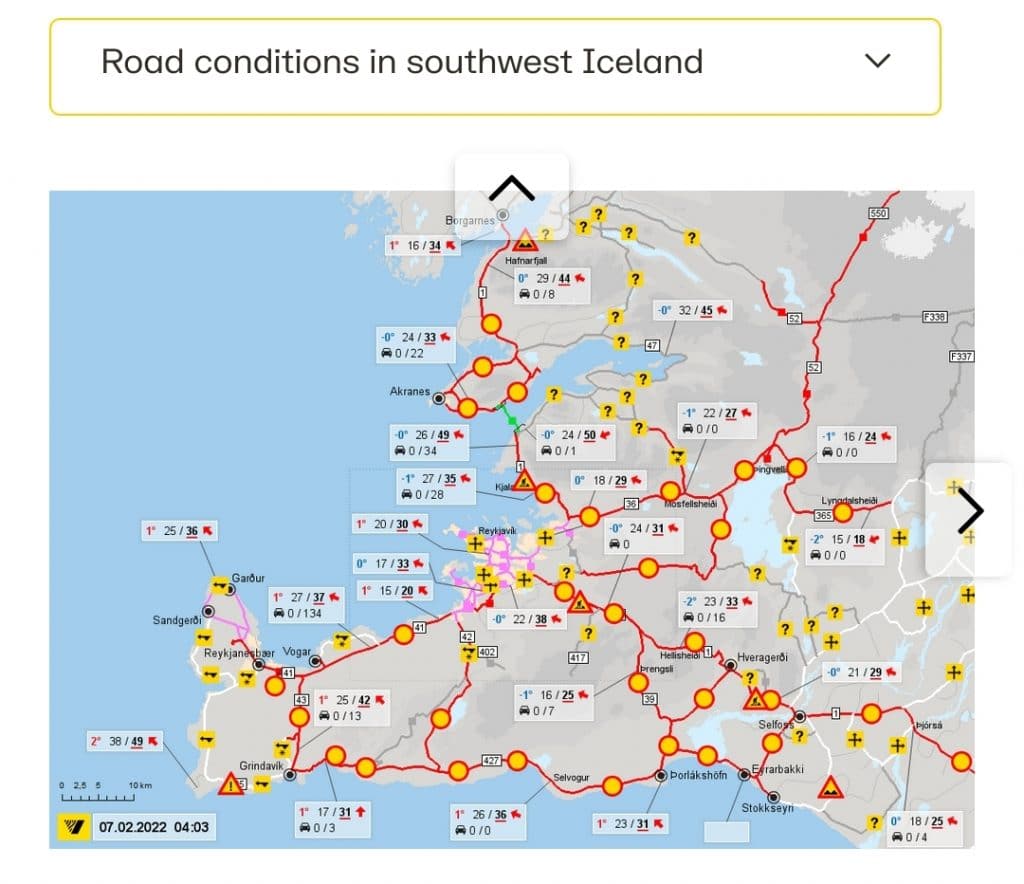
Checking the weather forecast and road conditions ahead of time are essential if you want to make sure your road trip is safe and hassle-free. It’s also incredibly easy to do both. The first place to check out is Iceland’s SafeTravel website. SafeTavel was designed with tourists in mind, so, at a glance, you can see any urgent weather warnings or road closures on their home page. It’s also available in five languages.
For a more in-depth look at weather forecasts, you can check out the website of the Icelandic Meteorological Office. This is the most reliable weather information source in the country, and it’s the one the locals use. It’s also available in English and also lists the likelihood of seeing the Northern Lights each day.
For a comprehensive look at the road system and any potential problems, the Icelandic Department of Roads has a website with live updates in English. The site also has travel information and live webcams.
What Are the Main Rules of Driving in Iceland?
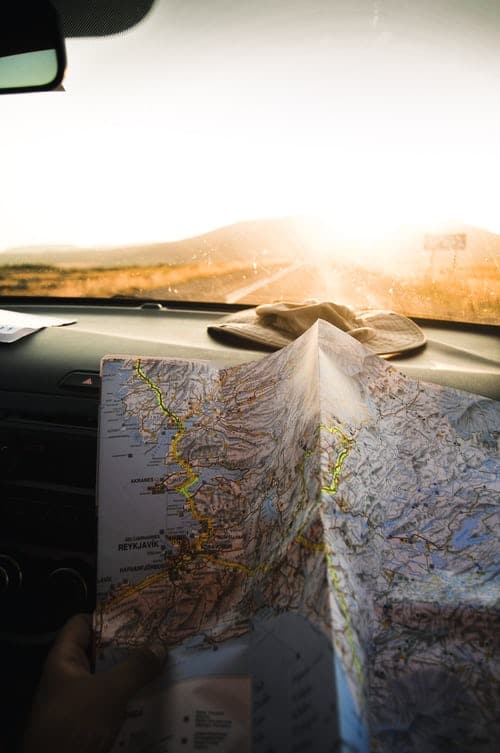
In Iceland, they drive on the right-hand side of the road. The country uses the metric system, so all speed signs and distances are displayed in kilometres. The maximum speed limit in the entire country is 90 km/h. In suburban areas, the speed limit is 50km/h unless otherwise signed.
Be careful not to speed because there are many permanent speed cameras around the country, and if you manage to receive a speeding fine in a rental car, you may end up paying additional administration fees for it.
It is illegal to use a mobile phone while driving, so it’s always better to hand over navigation responsibilities to a passenger.
This might be a surprise, but all cars must have their headlights on at all times during operation in Iceland. This means that it doesn’t matter the time of day; headlights must be on. You might notice that for some cars, ‘headlights on’ is a default setting.
The blood alcohol limit in Iceland is 0.05, and the police will prosecute tourists if they are caught breaking the law.
As stated earlier, there isn’t really free camping in Iceland. Always stick to designated campsites and never pull over to the side of the highway for an extended period of time unless it is absolutely necessary and safe.
When Should I Not Drive in Iceland?

In a nutshell, you should never drive in Iceland if you feel unsafe or are in weather conditions you’re not used to. It might be exciting to be in a new, otherworldly environment, but it’s much safer to stay at your hotel than it is to venture out onto icy roads in extreme winds just to get your money’s worth out of your vacation.
Always check the official websites provided earlier for guidance and give yourself plenty of time to get to your destination.
Conclusion
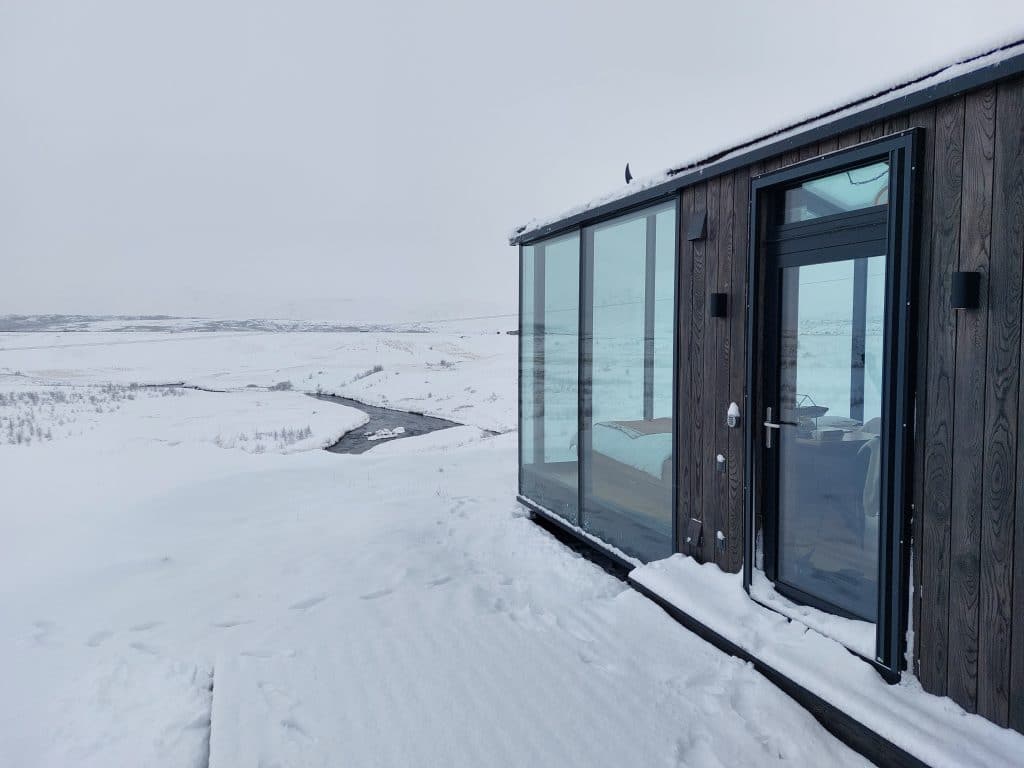
If you decide to take the trip of a lifetime and do a self-drive tour of Iceland, it’s worth mentioning that the Panorama Glass Lodge can be an incredible place to base yourself.
Panorama Glass Lodges are available on Iceland’s idyllic south coast, overlooking pristine Icelandic nature at the foot of a volcano. These immaculate cabins combine comfort and luxury while bringing the magnificent outdoors inside.
Staying at the Panorama Glass Lodge in winter also gives you the perfect vantage point for gazing out at the skies in search of the Northern Lights. Imagine after a day of winter exploring, coming back to a warm bed where you can just watch the Aurora Borealis dance above your head as you drift off to an incredible slumber.
If you have your travel dates, check out the Panorama Glass Lodge’s options today, so you don’t miss out on this popular accommodation option.
